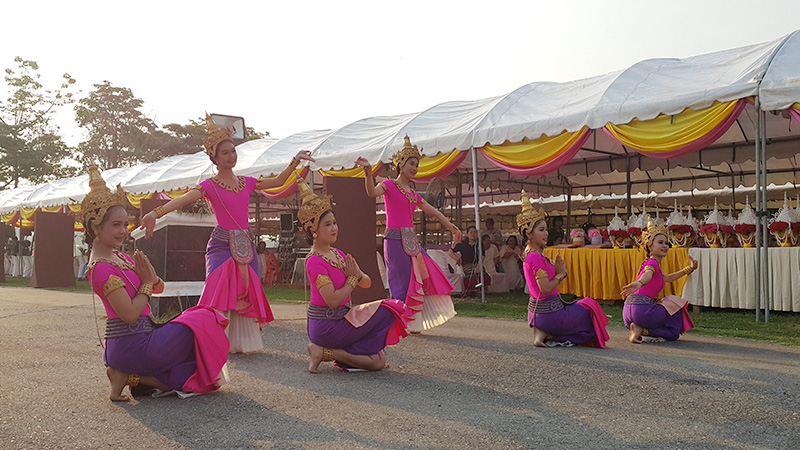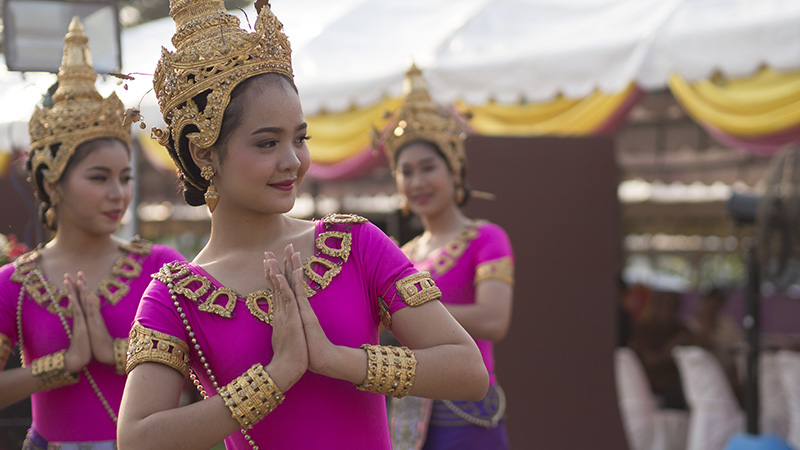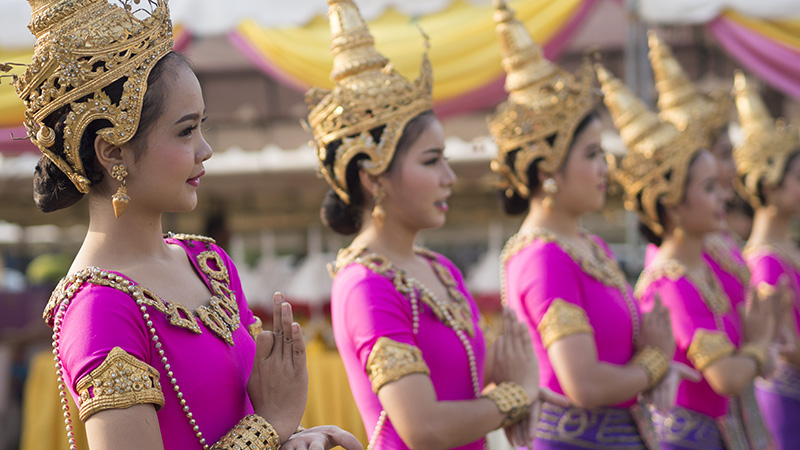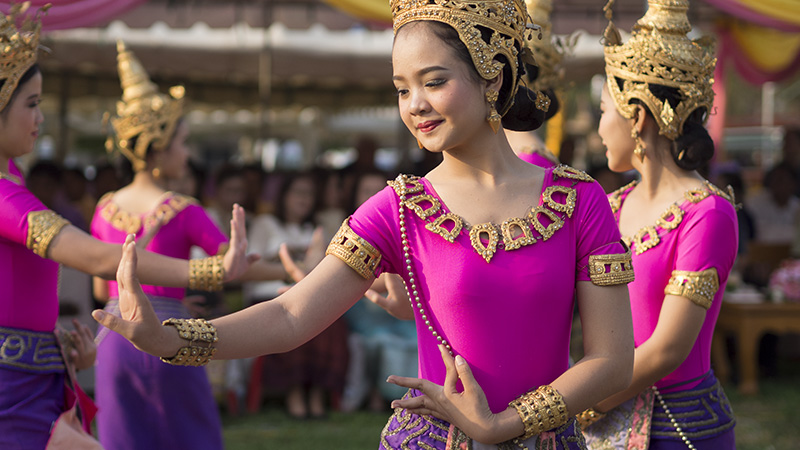Music and Performance
There is no evidence of the types of bands, songs, or dancing in the Sukhothai period. However, some inscriptions indicated information that makes it possible to assume the style of this art. For example,
"Amdaeng Yad created this to worship God, consisting of one gong, with a value of two Tarnlueng, one drum, teakwood with a value of one Tamlueng, one moon-shaped bell with a value of two Chang and six Salueng" (Stone inscription of Khema Temple).

ระบำสุโขทัย 
ระบำสุโขทัย 
ระบำสุโขทัย 
ระบำสุโขทัย
During the ceremony of Kathin, there are a donation, fruits, and pillows. The donation is about two million a year, to the ceremony of Kathin of forest temples along with sounds of the drums, percussions, harps, dancing, and singing. Some play, some laugh, some dance,... "(Stone inscription of King Ramkhamhaeng)
a couple of percussions. Servants from two houses must play for God two gongs, three drums, trumpets to God. "(Stone inscription of Chang Lom Temple)
These messages from the inscriptions helped academics assume that the music used in the Sukhothai period consisted of the band of five percussions and Prakhom Band.
However, nowadays, a type of the local band was found. It was popular in the lower northern provinces, such as Sukhothai, Phitsanulok, Kamphaengphet, etc. It was called "Mangkhla", consisting of musical instruments including Mangkhla, a small drum with a single-side leather, a large two-sided drum called 'Klong Yeun", a small two-sided drum called "Klong Lon", which would be played together, also the two gongs hanging on the litters, a pair of small cymbals and large cymbals.
The earliest evidence about Mangkhla in this area appeared in the royal work "Archives to Phitsanulok" in 1901, stating that forget to tell about Mangkhla... This Mangkhla is a real orchestra of five musical instruments. There is a small drum like torntom with a single-side leather and a long stick-like "Atat".. the music is like from a Malayan drum'
The five musical instruments mentioned are a type of ancient music of the Indian and Sri Lankan people, consisting of musical instruments and play similar to the bands mentioned the in stone inscription of Chang Lom Temple. It is believed that Mangkhla was rooted in the music bands of the Sukhothai period as well.

















